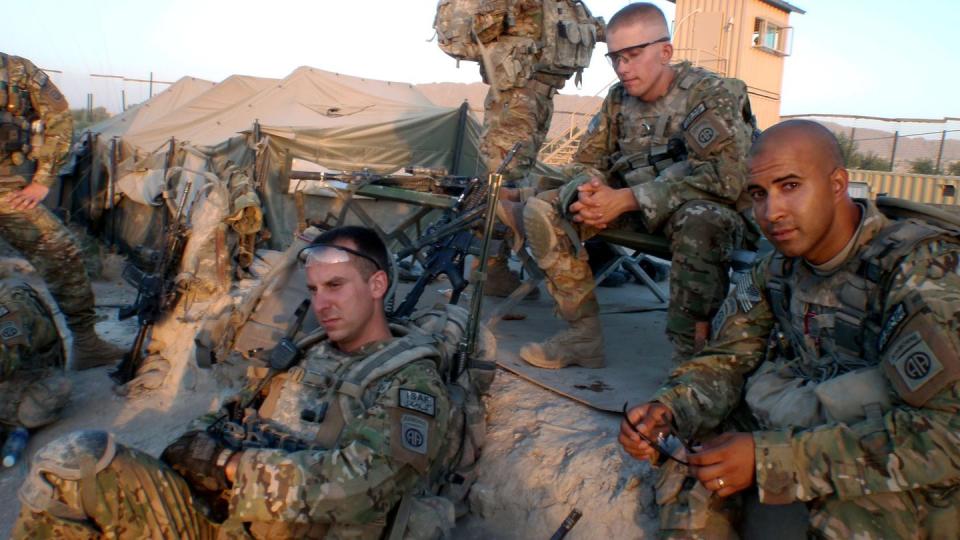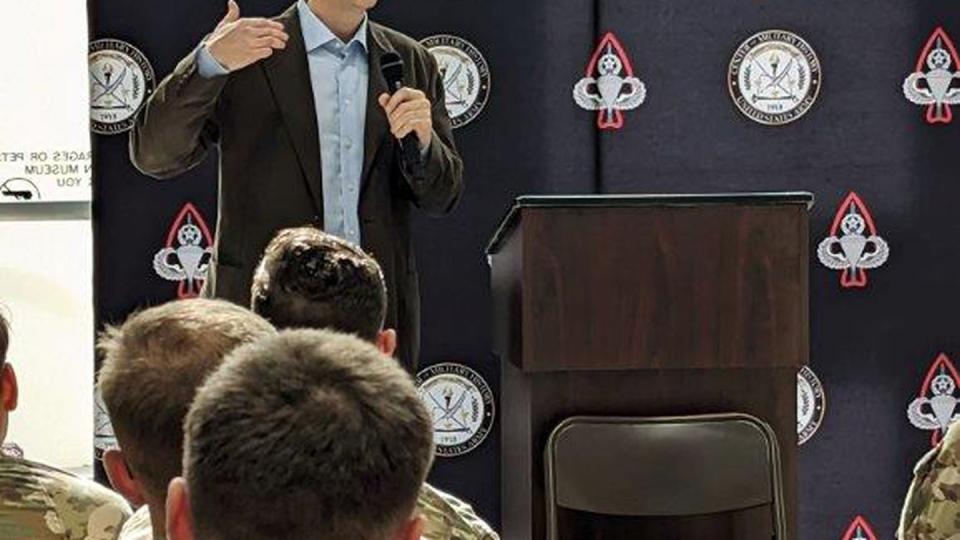Paratrooper’s Afghan War book helps platoonmates tell their story
William Yeske didn’t want to be the one to write about his unit’s deployment to Afghanistan.
The former Army sergeant wrestled with the thought of putting his memories down for about a decade. It wasn’t until after he sat down for interviews with another writer who later published a book that stirred up some emotions among his former platoonmates and their tour that he started typing.
Yeske deployed as part of 1st Platoon, Bravo Company 2nd Battalion, 508th Parachute Infantry Regiment from 2009 to 2010 in Afghanistan. The unit would face its crucible in the IED-laden Arghandab River Valley in Kandahar Province, losing four soldiers during the deployment and three since its end.
The book “Damn the Valley: 1st Platoon, Bravo Company, 2/508th PIR, 82nd Airborne in the Arghandab River Valley Afghanistan” begins with Yeske’s experience, joining the Army a little later than most during the Iraq and Afghanistan wars. Once the text reaches the Afghanistan deployment, Yeske pulls in multiple accounts of key events from various members of the unit.
Yeske said he chose to write the book to tell the platoon-level story of his unit after another book, “Bravo Company: An Afghanistan Deployment and Its Aftermath” by journalist Ben Kesling focused on the trauma members of the unit faced after the deployment, some of them turning to suicide, and how the unit was the basis for a new approach to group, rather than only individual therapy by the Veterans Health Administration.
The fallen of Bravo Company, both those lost to combat and since the deployment:
Spc. Jason Johnston, Dec. 26, 2009
Staff Sgt. Scott Brunkhorst, March 30, 2010
Spc. Joseph Caron, April 11, 2010
Spc. Christopher Moon, July 13, 2010
Staff Sgt. Allen Thomas, Sept. 28, 2013
Sgt. Derek Hill, Sept. 11, 2018
Sgt. Jason Spottedhorse, May 29, 2019
The former paratrooper told Army Times that Kesling’s book was needed but members of his unit felt left out of the larger story of their tour.
Editor’s Note: The following Q&A has been edited for clarity and length.
Q: Why did you join the Army in 2008, in the middle of two wars? You were 26, a little older than your standard new enlistee.
A: I had always wanted to join in the past, ever since high school. Stuff fell apart in a relationship and I kind of let it get to me and I was in a bad spot and I said, hey I feel like I need this discipline and I need to hit the reset button. I ended up joining the Army because they were the ones that had the Special Forces program. I kind of felt that the war in Afghanistan was winding down and if I wanted to join up, and do something and be a force for good, and that Green Berets was the way to go. I got hurt during the initial pipeline, ended up in the 82nd [Airborne Division].

Q: What did you and your fellow platoonmates expect as you prepared for your first combat deployment?
A: Going into it we had trained to go to Iraq. So here we were thinking urban, building-to-building fighting. There was a lot of stuff going on with [Explosively Formed Penetrators]. And a lot of stuff in my head at the time was, “alright, this is it, you’re going into it with a really disciplined unit.” Leadership pushed us really hard. And when we got the orders that came down and it switches to Afghanistan I, for one, was a bit relieved. I thought, okay, we got some standoff now, the EFP issue is down and things are a little bit more rudimentary out there in Afghanistan. They don’t have as much of the bomb-making facilities. And of course, we get there and we find ourselves in a minefield. Getting ready for Iraq in that train up we thought we were getting ready for something big then were going to Afghanistan for a train and assist mission. We were like, come on, you’ve got to be kidding me. Helmand was almost an IED training ground.
Q: In some ways, this book is a response to another book about Bravo Company published in 2022, written by Wall Street Journal reporter Ben Kesling. Could you tell readers a little about that connection?
A: I had actually interviewed with Ben Kesling quite a bit. We sat down and talked quite a bit in two different sessions for four or five hours. I felt like I got to know his methodology behind it what he was trying to do with it. This is a good thing, let me tell you my end of it. There was talk from the guys in the company, they’re getting spooked, weirded out and they’re getting strange vibes from this thing. I had thought about writing about it for about 10 years when we started talking. And I was kind of relieved when he hit me up. I’m thinking somebody else can write this story. This is something I never wanted to put down. And I sort of realized it was a cop out. I got an advanced copy a few weeks before it came out. I didn’t want to read it and be influenced by it if I was going to write something. So I called Ben and asked, since he’d heard my story, if he thought I should write it. He said, absolutely, put it down. What ended up happening with a lot of the guys is Ben focused on the PTSD and the suicides and a lot of the guys he interviewed felt marginalized in his book because of the narrow scope of his story, which was invoking change in veteran suicide approaches within Veterans Affairs. So I decided to do a platoon-level book and leave holes in the story for other guys to bring their stories forward.

Q: This book isn’t a straight memoir. In multiple chapters you tell the story of different incidents multiple times but from the viewpoints of different soldiers. Why did you decide to take that approach?
A: That inspired me to get these other perspectives. You know in moments of trauma you get 125, 150 guys together and a traumatic incident happens, there’s going to be a hundred something stories out there. And they might not connect in exact ways, but they’re all true from the perspective of the person who experienced it, because that’s how they perceived it. So there are very few points in the book where there weren’t multiple people seeing what was going on. Really through this whole thing it has been cross-talking with other guys, getting back in touch with them and getting them talking about this stuff. But also getting them talking to one another, creating that peer-to-peer accountability. And it’s been so good for so many guys to start talking again. I know Ben’s book was the catalyst of it. In the year since his book published and guys came out and saw that wasn’t the end all, be all. We still have a chance to put our story out there. I hope they realize that, because I enjoyed Ben’s book, I really hope that it falls on the ears it needs to in the VA system.
Q: What was the audience you were writing for and what do you hope readers get out of this book?
A: I wrote this book for the lower enlisted who went to Afghanistan. But then it’s dual purpose. Let’s face it we’re living in a time where we’ve got multiple fronts going off, we’ve got Israel, we’ve got Ukraine, you’ve got a lot of unrest in other places. So for those looking to join the military, it’s not “hey, this is a good thing, a glorifying thing.” It’s not a “hey, this was the worst time in our life.” It’s, “this is what you’re getting yourself into.” Whether it’s good or whether it’s bad. I hope I left that kind of ambiguous because it’s really up to the person who experiences it themselves and how they’re going to take it.

